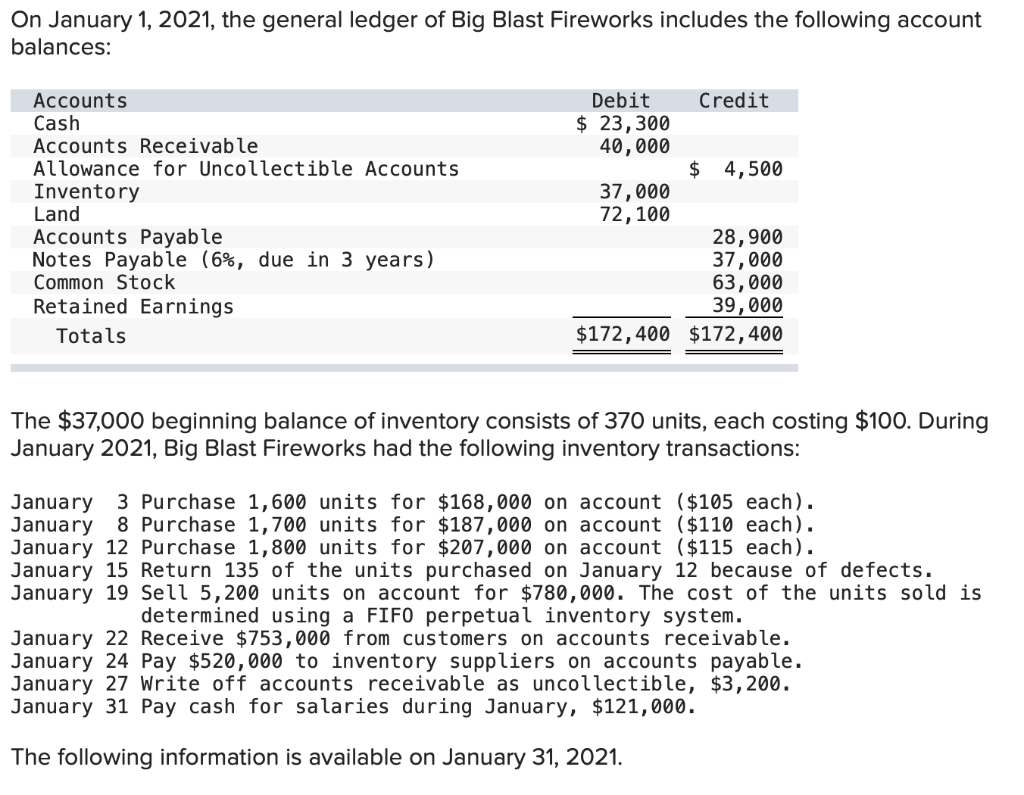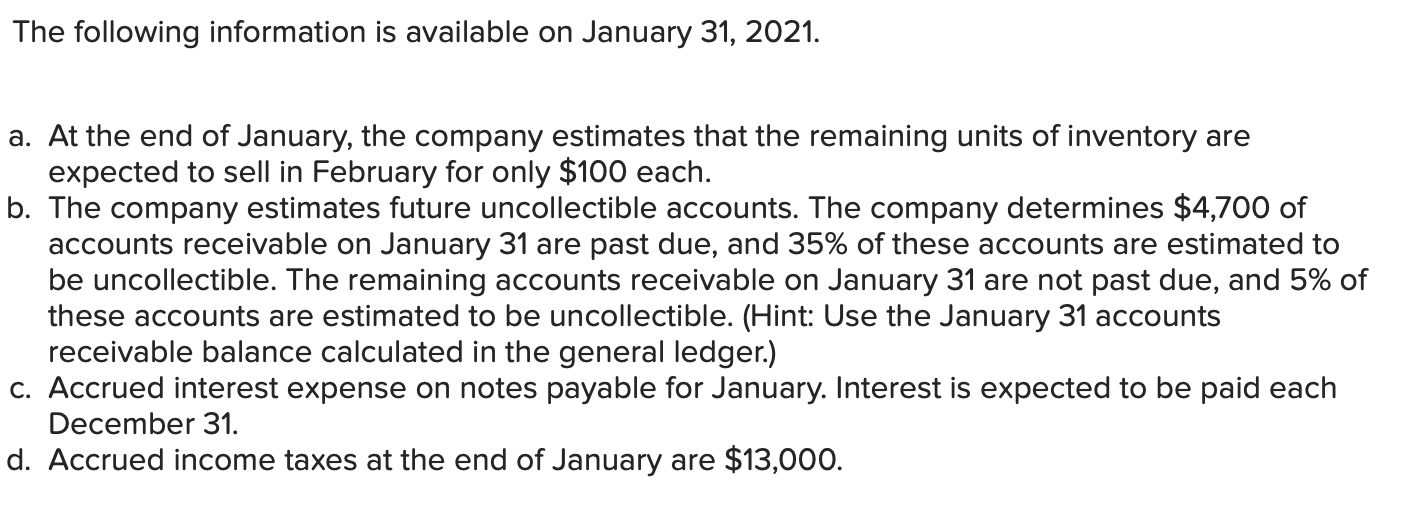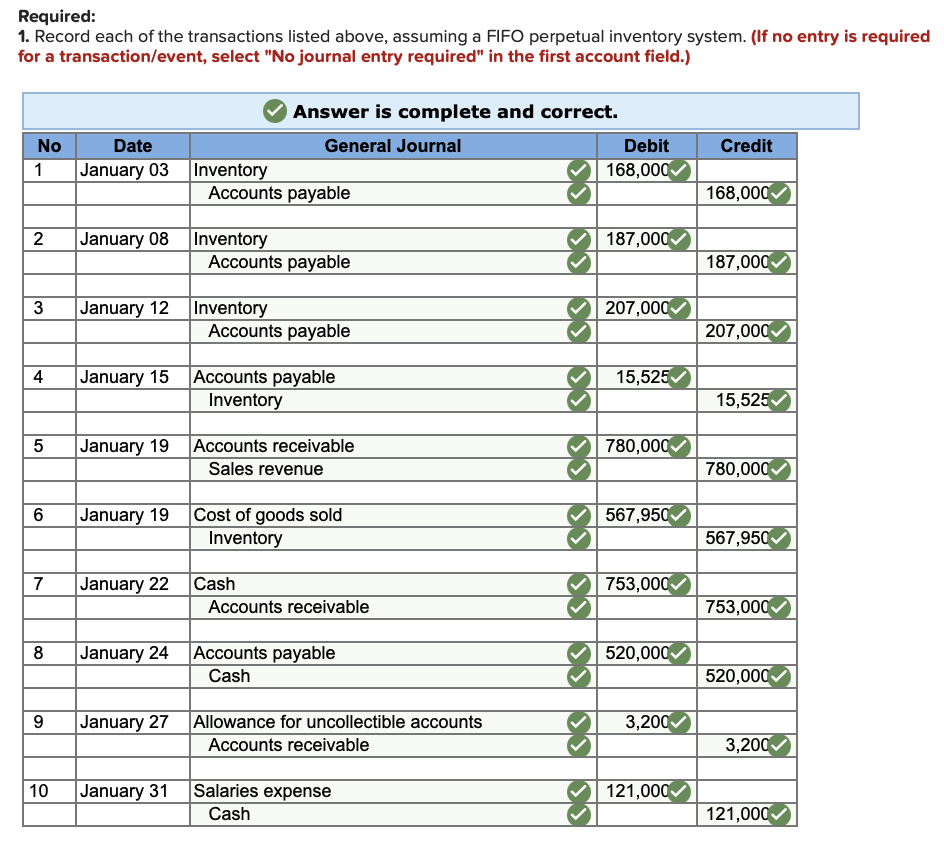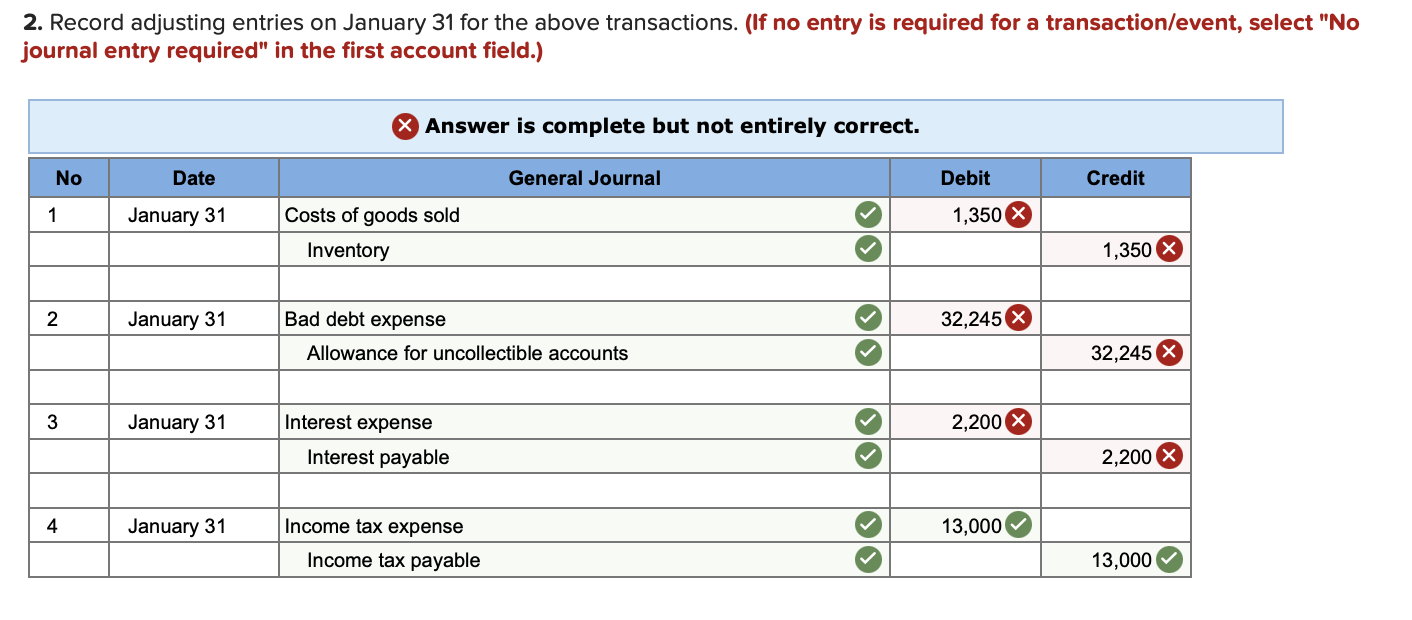


 How to calculate #1. #2, #3?
How to calculate #1. #2, #3?
On January 1, 2021, the general ledger of Big Blast Fireworks includes the following account balances: Accounts Cash Accounts Receivable Allowance for Uncollectible Accounts Inventory Land Accounts Payable Notes Payable (6%, due in 3 years) Common Stock Retained Earnings Totals Debit Credit $ 23,300 40,000 $ 4,500 37,000 72,100 28,900 37,000 63,000 39,000 $172,400 $172,400 The $37,000 beginning balance of inventory consists of 370 units, each costing $100. During January 2021, Big Blast Fireworks had the following inventory transactions: January 3 Purchase 1,600 units for $168,000 on account ($105 each). January 8 Purchase 1,700 units for $187,000 on account ($110 each). January 12 Purchase 1,800 units for $207,000 on account ($115 each). January 15 Return 135 of the units purchased on January 12 because of defects. January 19 Sell 5,200 units on account for $780,000. The cost of the units sold is determined using a FIFO perpetual inventory system. January 22 Receive $753,000 from customers on accounts receivable. January 24 Pay $520,000 to inventory suppliers on accounts payable. January 27 Write off accounts receivable as uncollectible, $3,200. January 31 Pay cash for salaries during January, $121,000. The following information is available on January 31, 2021. The following information is available on January 31, 2021. a. At the end of January, the company estimates that the remaining units of inventory are expected to sell in February for only $100 each. b. The company estimates future uncollectible accounts. The company determines $4,700 of accounts receivable on January 31 are past due, and 35% of these accounts are estimated to be uncollectible. The remaining accounts receivable on January 31 are not past due, and 5% of these accounts are estimated to be uncollectible. (Hint: Use the January 31 accounts receivable balance calculated in the general ledger.) C. Accrued interest expense on notes payable for January. Interest is expected to be paid each December 31. d. Accrued income taxes at the end of January are $13,000. Required: 1. Record each of the transactions listed above, assuming a FIFO perpetual inventory system. (If no entry is required for a transaction/event, select "No journal entry required" in the first account field.) Answer is complete and correct. Date General Journal Debit January 03 Inventory 168,000 Accounts payable No 1 Credit 168,000 187,000 N January 08 Inventory Accounts payable 187,000 3 207,000 January 12 Inventory Accounts payable 3 207,000 4 15,525 January 15 Accounts payable Inventory 15,525 5 780,000 January 19 Accounts receivable Sales revenue 780,000 6 6 567,950 January 19 Cost of goods sold Inventory 567,950 7 January 22 Cash Accounts receivable 753,000 8 520,000 January 24 Accounts payable Cash 753,000 8 520,000 9 3,200 January 27 Allowance for uncollectible accounts Accounts receivable 3,200 10 January 31 Salaries expense Cash 121,000 121,000 2. Record adjusting entries on January 31 for the above transactions. (If no entry is required for a transaction/event, select "No journal entry required" in the first account field.) X Answer is complete but not entirely correct. No Date General Journal Debit Credit 1 January 31 1,350 X Costs of goods sold Inventory 1,350 2 January 31 32,245 Bad debt expense Allowance for uncollectible accounts 32,245 3 January 31 2,200 X Interest expense Interest payable 2,200 4 January 31 13,000 Income tax expense Income tax payable 13,000



 How to calculate #1. #2, #3?
How to calculate #1. #2, #3?





